

Yang Luoshu carves on a wood board in his workshop in Yangjiabu Village of Hanting District in Weifang, east China's Shandong Province, Jan. 20, 2020. Yang Luoshu, 94, is a representative inheritor of Yangjiabu woodblock New Year paintings. (Photo/Liu Jing)
The period ahead of the Spring Festival is the busiest time of the year for Yangjiabu New Year paintings artists in Weifang City, east China’s Shandong Province.
As a folk handicraft, New Year paintings convey people's expectations of the coming new year.
Traditionally, as each Chinese New Year arrives, many families replace their New Year pictures in order to “say goodbye to the past and welcome the future”.
Yangjiabu New Year paintings have more than 600 years of history, and represent one of the three major woodblock New Year painting styles in China.
In 2006, Yangjiabu New Year paintings were listed as the first batch of national intangible cultural heritages by China's State Council.
 |

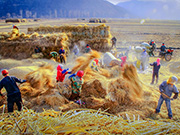 Award-winning photos show poverty reduction achievements in NE China's Jilin province
Award-winning photos show poverty reduction achievements in NE China's Jilin province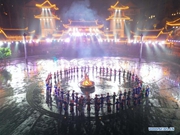 People dance to greet advent of New Year in Ameiqituo Town, Guizhou
People dance to greet advent of New Year in Ameiqituo Town, Guizhou Fire brigade in Shanghai holds group wedding
Fire brigade in Shanghai holds group wedding Tourists enjoy ice sculptures in Datan Town, north China
Tourists enjoy ice sculptures in Datan Town, north China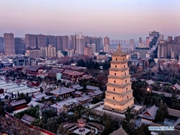 Sunset scenery of Dayan Pagoda in Xi'an
Sunset scenery of Dayan Pagoda in Xi'an Tourists have fun at scenic spot in Nanlong Town, NW China
Tourists have fun at scenic spot in Nanlong Town, NW China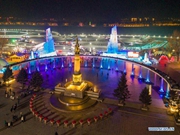 Harbin attracts tourists by making best use of ice in winter
Harbin attracts tourists by making best use of ice in winter In pics: FIS Alpine Ski Women's World Cup Slalom
In pics: FIS Alpine Ski Women's World Cup Slalom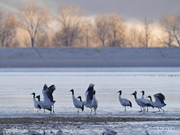 Black-necked cranes rest at reservoir in Lhunzhub County, Lhasa
Black-necked cranes rest at reservoir in Lhunzhub County, Lhasa China's FAST telescope will be available to foreign scientists in April
China's FAST telescope will be available to foreign scientists in April